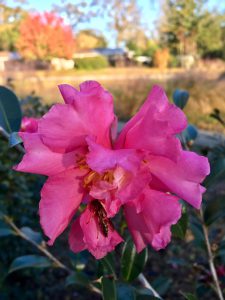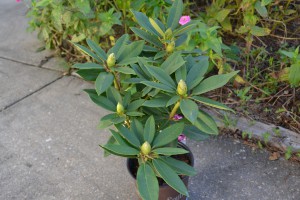
Some Camellias Won’t Flower Well in North Florida
Q. I have a camellia plant that is about 25 years old. It forms flower buds but the buds never fully open. The plant otherwise looks healthy. Is there something that I’m doing or not doing that causes this?
A. I have seen this happen over the years. There are a number of possibilities for why this happens. If the camellia cultivar is otherwise known to do well in the area, the problem could be caused by one or more of these factors.
- Stress (primarily drought stress could inhibit buds from opening)
- Freeze damage
- Too many buds on the plant to allow each and every bud to open
However, with this being the norm for your camellia plant for that many years, it may be the wrong camellia variety in the wrong place.
Camellias have been so common in our Southern landscapes that some people think they are native to our area. However, camellias are native to Asia. They were first brought to America during the latter part of the 1700’s.
Years ago, people planted any camellia they could get their hands on because camellias weren’t as common or available and definitely had a more limited selection.
Some camellia cultivars are simply not well adapted to the Gulf Coast and, as a result, will not flower well even though they may grow well here. This is why some varieties are favored in Seattle, some do better in California, some do better in New England and others perform well here in the South.
Even though camellias are a common sight in shady Southern gardens now, not all camellias will perform well here. So, it is important to do some homework before purchasing and planting just any old camellia.
As stated in the UF/IFAS Extension publication Camellias at a Glance, “There are numerous species of Camellia, but the types commonly grown as landscape shrubs in Florida are Camellia japonica, Camellia sasanqua, and hybrids of these.” This publication is available online at https://edis.ifas.ufl.edu/pdffiles/EP/EP00200.pdf or from the UF/IFAS Extension Office in your County.
Sasanqua and japonica camellias come in whites, pinks, reds, double and single flowers and sizes from four to twenty feet tall.
The sasanqua types bloom as early as October while the japonica types begin flowering later.
It is possible to select a few different varieties, instead of just one, to extend the color in your landscape from weeks to months. Selecting camellias for staggered flowering times can provide color all fall and winter long.
When purchasing camellias, research the bloom times of varieties for your area.


